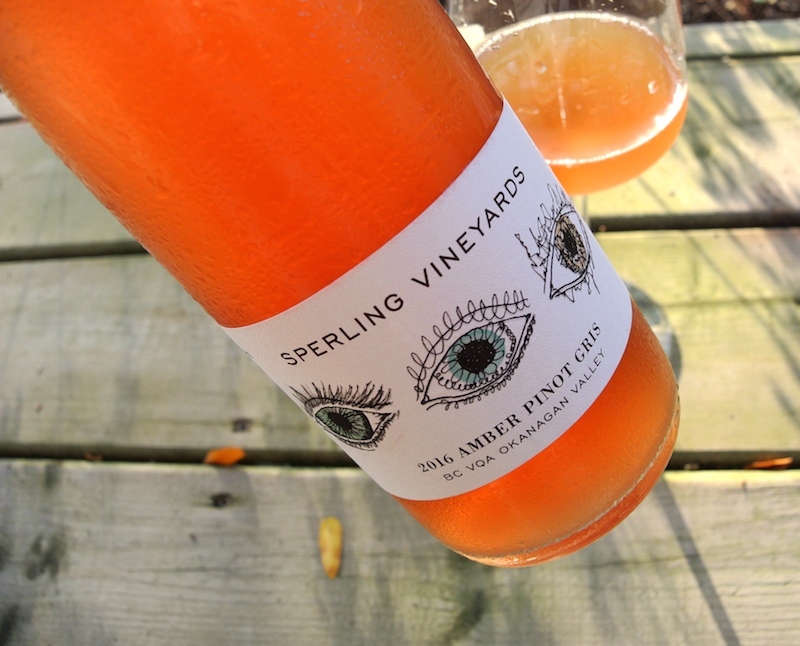
By Rick VanSickle
So, you have a fabulous cut of beef you want to throw on the barbecue. It’s a prime cut from a trusted cattle farm that uses only 100% grass fed beef. You do not want to f*ck this up.
The moment arrives. You love the old standby spices you’ve been using for years to dress your meat: Black peppercorns, garlic scape salt, touch of paprika, Worcestershire sauce and rub it all in.
Then you hesitate. Why not this one time simply grill that beautiful cut of meat sans spices and garlic, sans everything and grill it to perfection? Why not, this one time, just taste the meat as it was meant to be tasted?
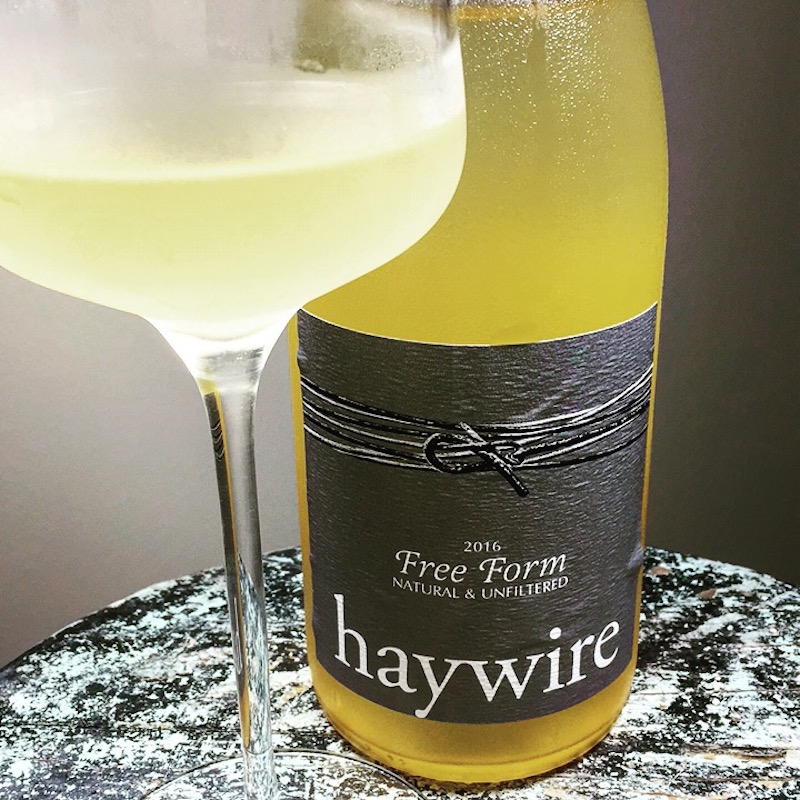
That “less is more” philosophy is being applied to a growing number of wineries in Canada. Start with great vineyards, plant the right grapes in the right terroir, and simply make wine: No tricks, no spice, just grapes made into wine and poured into your glass with all the beautiful surprises that come with that.
In the Okanagan Valley, Niagara Peninsula and Prince Edward County this new way forward of making more natural wines is not a “thing” any more. It’s fully entrenched into the mosaic that is a part of the industry as a whole as more and more wineries leave room to experiment with crafting less interventionist wines that often, but not exclusively, come from organic and biodynamic farming.
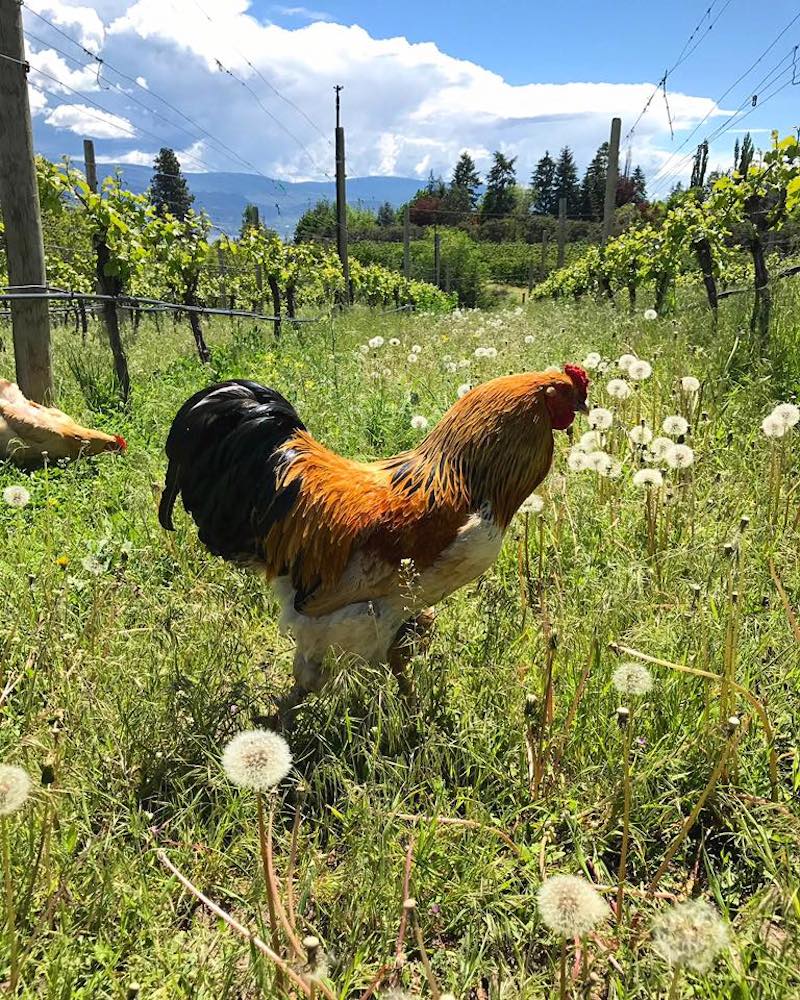
In Ontario, the more natural approach to winemaking was given a huge boost when VQA created an official category for skin-fermented white wines (so called orange or amber wines), making it more practical (and friendlier to the bottom line) to try different things and opening up the category of natural (or near natural) wines to a far greater number of consumers.
In B.C., for many reasons (not the least of which is drier, less prone-to-disease climatic conditions), organic and minimal intervention winemaking is further ahead than in Ontario. And the results are spectacular.
I am constantly made aware of this by the wines I get to taste from the Okanagan. Two wineries — Sperling Vineyards and Haywire Winery — recently got my full attention for how they have taken their game from the milk run to the black run and are turning heads in the process.
Sperling Vineyards
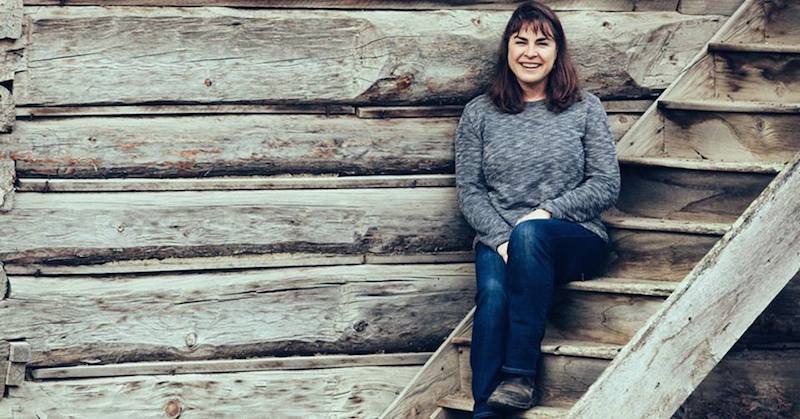
Winemaker Ann Sperling, above, is no stranger to walking on the wild side. Her wines, both at Kelowna’s namesake family winery and Southbrook Vineyards in Niagara, are made from organic and biodynamically farmed fruit with minimal intervention. She is a believer in the holistic approach to winemaking, that good things come from an eco-system that isn’t constantly bombarded with unneeded chemicals to control all manner of pest and pestilence.
Sperling Vineyards, established in 1925, has become a vinous reality producing elegant wines of character through the vision and partnership of Ann and Susan Sperling, along with their husbands, Peter Gamble and Paul Richardson.
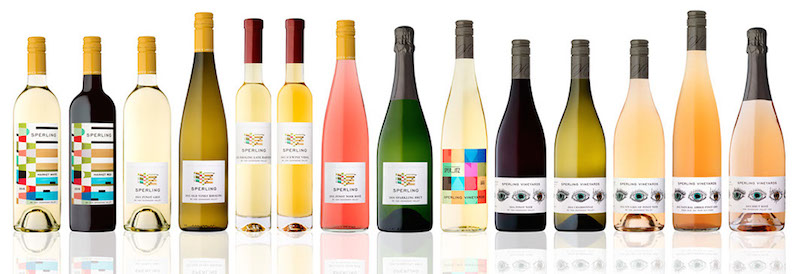
The daily dedication to every task in the vineyard, winery and commercial operations is over-seen by niece-daughter Jill with her husband Rickard Branby.
The high elevation slopes and mineral rich soils on the east benches of Kelowna come to life via old vines and carefully crafted wines.
Note: Sperling is fully organic certified as of the 2017 crop.
Three to try
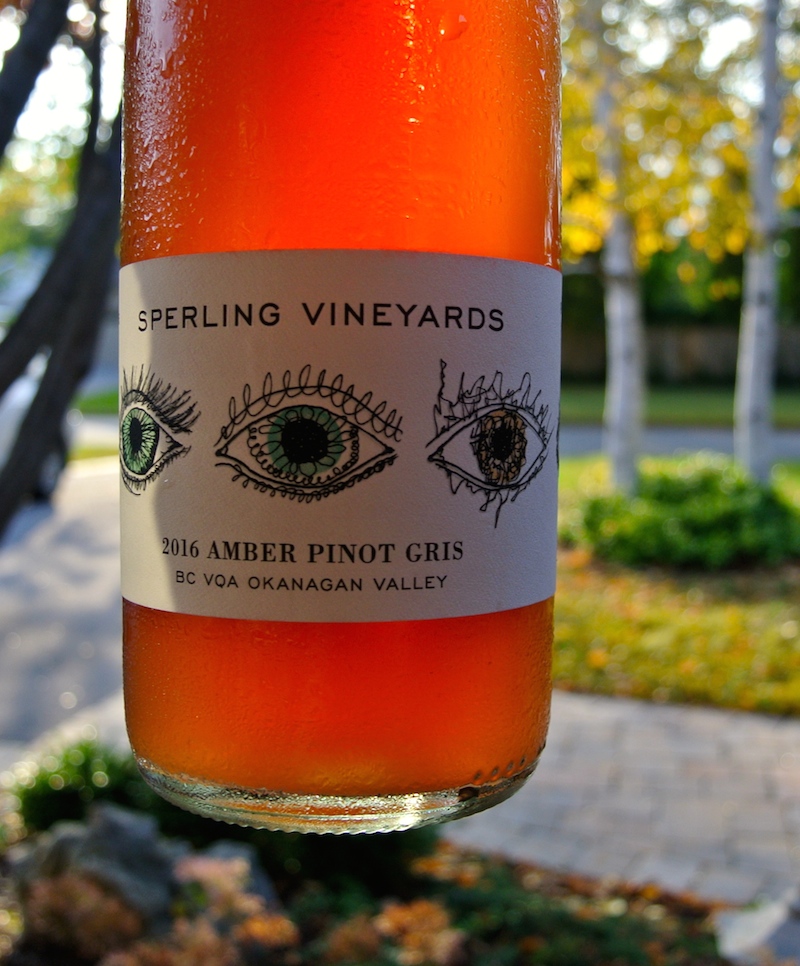
Sperling Amber Pinot Gris 2016 ($30, 91 points) — This VQA Gris hails from Sperling’s Vision Series, marked by the stylistic roaming eyes on the label. The wines in this tier are made from younger vines, experimental style, winemakers’ playground, small lots, individual and vintage expression. This is an “orange” or “amber” natural wine made from 40% whole cluster, 40% whole berry and 20% pressed juice from hand-picked Gris. Natural yeast and malolactic fermented, nothing has been added and nothing taken away (no sulphites, or other additives, and no fining or filtration) from the wine. So, in the glass, yes slightly cloudy, perhaps more so do due to its long trip from Kelowna to Niagara, and a brilliant, glowing amber hue. It’s not a fruity nose in the traditional sense, but more a stone-fruit and melon expression with umami undertones and earthy, pulpy, orange zest accents that change as you swirl to add black tea, mineral and savoury notes. This is really a snapshot in time, as it changes in the glass from one day to the next. But, no doubt, a rounded feel on the palate with pulpy citrus, fuzzy peach, melon, mineral and citrus zest with underlying forest floor. Subtle notes of foraged mushrooms evoke that umami feel through the finish. Not quite the vibrancy of, say, Sperling’s Southbrook Skin-Fermented Vidal 2016, but amazingly unique and thought-provoking. Like wild things, Troggs style? This is your muse. Queue the music:
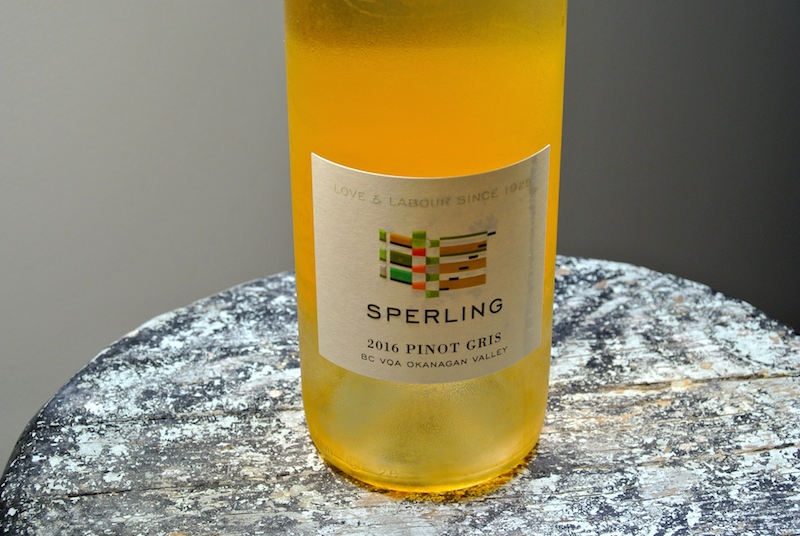
Sperling Pinot Gris 2016 ($20, 88 points) — The complete opposite of the above and a perfect example of how winemaking affects the end product. Take the same estate fruit and make it in a traditional, fresh style and you have a completely different expression. Classic Okanagan Gris with a highly aromatic nose of pure orchard fruits, pulpy citrus and melon. It’s expressive, clean and fresh on the palate with tasty peach, apple and zippy citrus on a vibrant core.
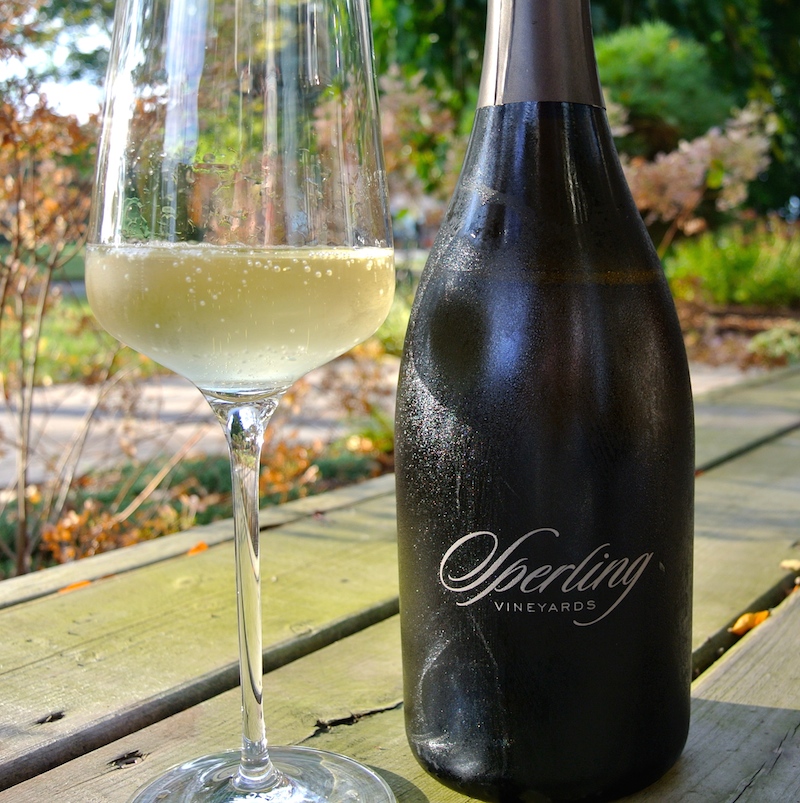
Sperling Brut Reserve 2011 ($55, 92 points) — From the Heritage series at Sperling, this traditionally made sparkler is a blend of 80% Pinot Noir and 20% Chardonnay from vines planted in 2008. Both varietals are picked early (19 Brix) for maximum freshness and finesse. After primary fermentation (no malo), the two varieties are blended to form the final cuvée. The wine is finished with no dosage added and shows only 1.9% residual sugar. The nose displays brioche/leesy/smoky/mineral notes with bright citrus, toast, apple skin and fresh, fresh, fresh waves of salinity. It’s electric on the palate with tiny, persistent beads of bubbles and electric acidity to accentuate the freshness in the mouth. Shows tension and finesse with perky citrus and apple notes on a crisp and perfectly dry finish. I suspect this highly stylistic bubbly will gain fat and more complexity if you allow it to age in your cellar. A wonderful drop.
Haywire Winery
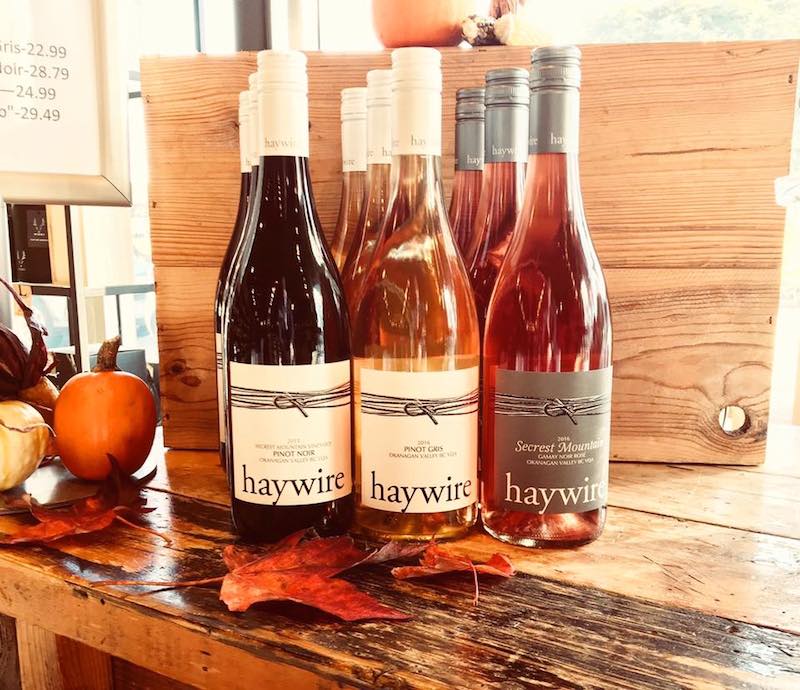
Haywire wines are made at Okanagan Crush Pad winery in Summerland. Owners Christine Coletta and Steve Lornie leapt into farming in 2005 when they converted an old orchard to a vineyard, starting a chain of events that ultimately led to the construction of a 30,000-case winery in 2011, and further land purchases in 2012.
Okanagan Crush Pad is a shared workspace where farmers and vintners collaborate to create their own labels. Visitors can wander past 17 large concrete tanks and clay amphorae with the combined capacity of 65,000 litres, to the area where table wine, sparkling wine, and spirits are made. Time-honoured, generations-old winemaking techniques are used, benefitted by the most advanced technology, always adhering to a “less is more” philosophy.
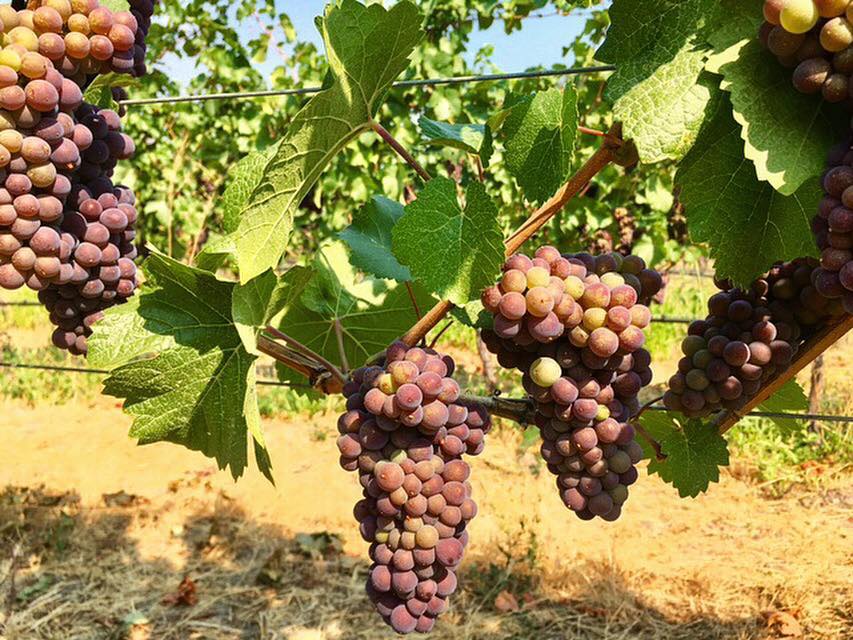
From the 2015 vintage, Haywire made 10,000 cases using organically grown grapes, native yeast, concrete tanks, zero oak and few, if any, additives. Three natural wines are included in the portfolio.
The goal here is simple. “To offer wines that are vineyard and vintage specific; inspired by the Okanagan, reflecting the rare and natural beauty of our land.”
The Free Form wines from the portfolio, crafted by winemaker Matt Dumayne, are made naturally with minimal cellar intervention; reflective of the estate’s terroir and farming practices.
Try these
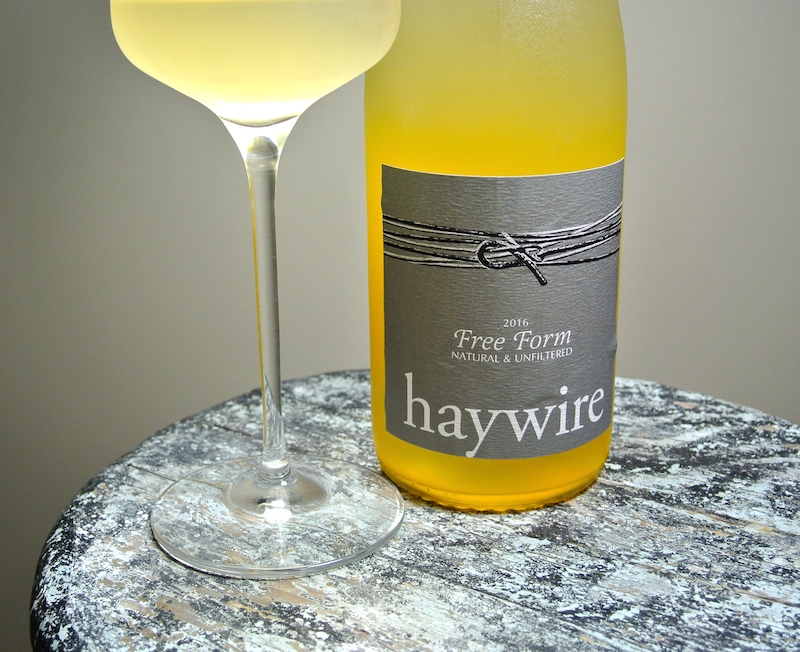
Haywire Free Form White 2016 ($35, 92 points) — This wine was made from Sauvignon Blanc grapes grown on Waters & Banks Vineyard. It was fermented using native yeast in stainless steel tanks where it aged on the skins for nine months. It was pressed and left to rest for an additional two months before bottling in August 2017. There is nothing added, nothing taken away in this natural wine and was finished unfiltered. The nose is all about the fresh grapefruit, herbs, new-cut hay, citrus rind and lemon on the nose. Such gorgeous texture on the palate, and completely dry, with expressive grapefruit, lemon tart, interesting savoury herbs and grass, with waves of freshening citrus acidity. A thought-provoking and interesting white wine.
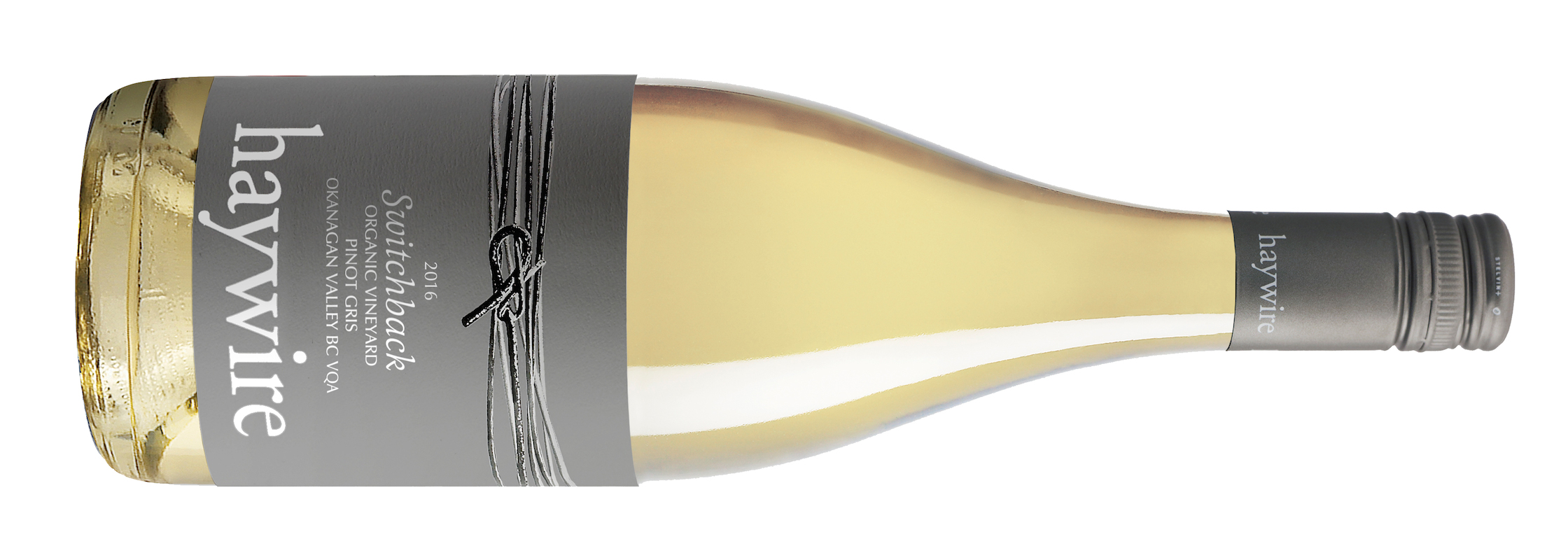 Haywire Switchback Organic Vineyard Pinot Gris 2016 ($25, 90 points) — Fermented using native yeasts and aged in concrete tanks for 10 months on gross lees. The nose shows fresh apple, pear, citrus and creamy/leesy notes. It has a creamy and textured entry on the palate and reveals more grapefruit with a mélange of melon, apple skin, subtle herbs and ripe pear on a racy/vibrant/fresh finish.
Haywire Switchback Organic Vineyard Pinot Gris 2016 ($25, 90 points) — Fermented using native yeasts and aged in concrete tanks for 10 months on gross lees. The nose shows fresh apple, pear, citrus and creamy/leesy notes. It has a creamy and textured entry on the palate and reveals more grapefruit with a mélange of melon, apple skin, subtle herbs and ripe pear on a racy/vibrant/fresh finish.
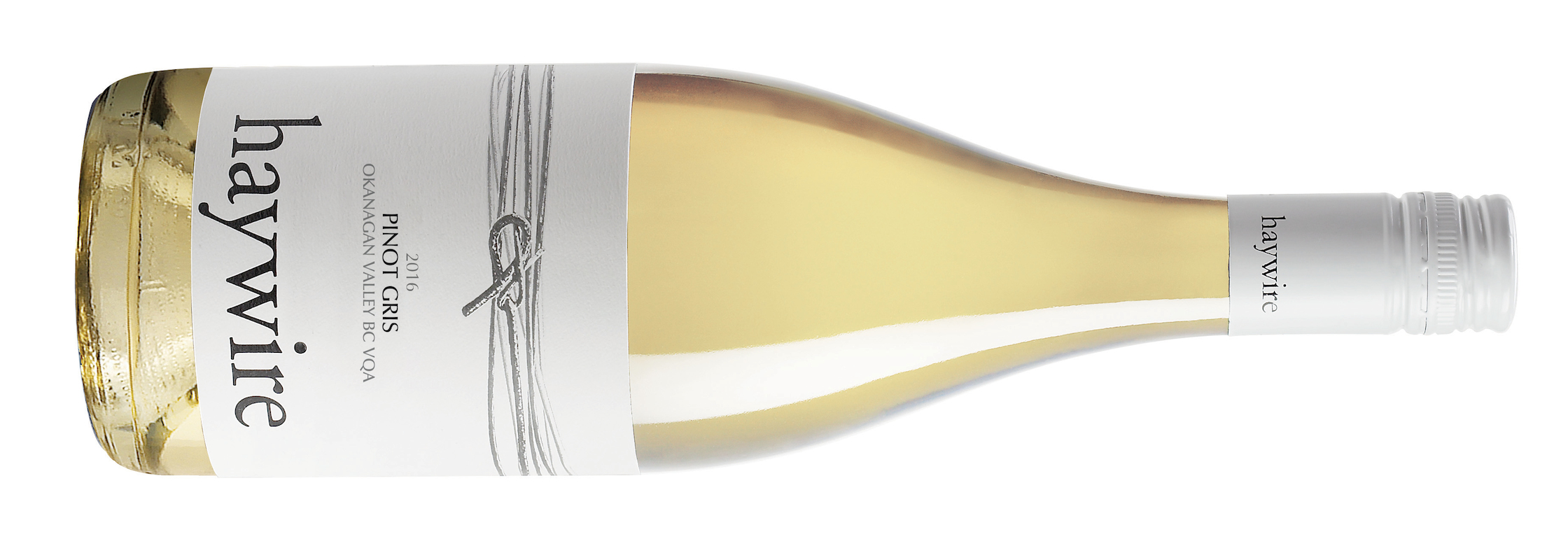 Haywire Pinot Gris 2016 ($23, 88 points) — Fruit is sourced from Secrest Mountain Vineyard in Oliver, whole bunch pressed, fermented and aged in concrete for 10 months. A bright, fresh nose of citrus, peaches and apple skin. Trademark texture on the palate from concrete aging, creamy and soft on the palate with juicy lemon/grapefruit and fuzzy peach with a clean and fresh finish. Delicious.
Haywire Pinot Gris 2016 ($23, 88 points) — Fruit is sourced from Secrest Mountain Vineyard in Oliver, whole bunch pressed, fermented and aged in concrete for 10 months. A bright, fresh nose of citrus, peaches and apple skin. Trademark texture on the palate from concrete aging, creamy and soft on the palate with juicy lemon/grapefruit and fuzzy peach with a clean and fresh finish. Delicious.
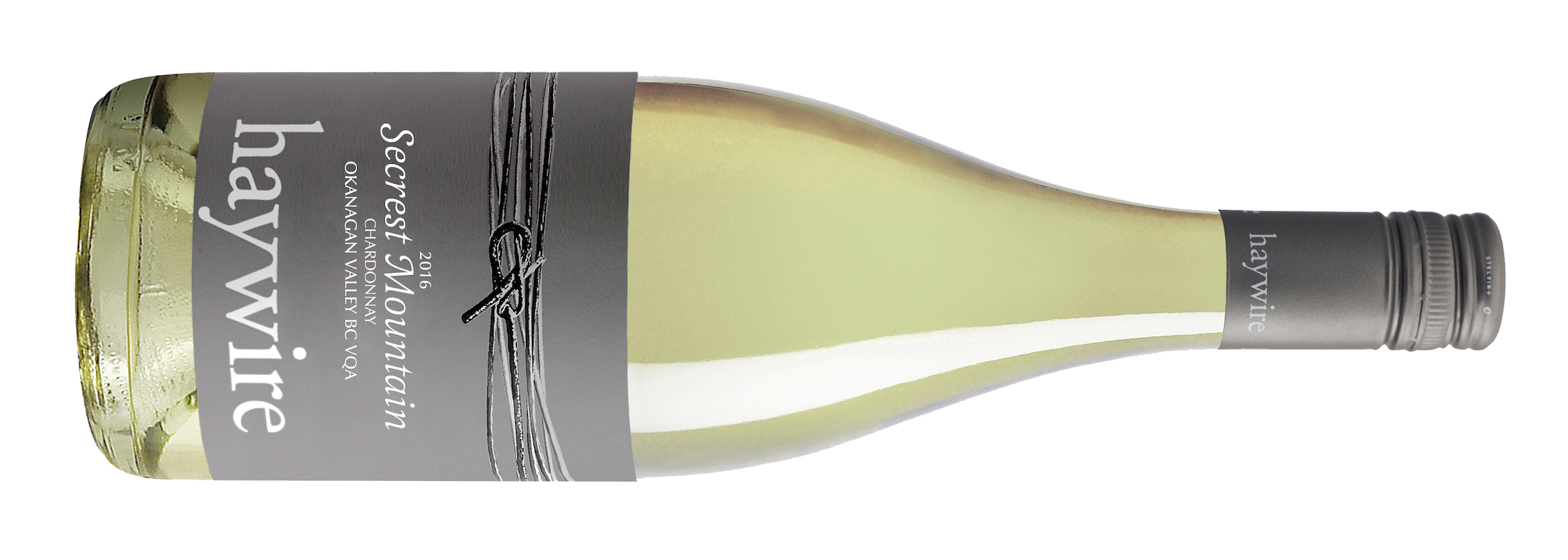 Haywire Secrest Mountain Chardonnay 2016 ($25, 90 points) — After a 12-hour skin contact, the Chardonnay was pressed straight to concrete, wild fermented and then 8 months of aging in small concrete eggs. A pure expression of Chardonnay with juicy peach, subtle tropical notes, fresh apple and lemon accents. Creamy and textured on the palate with well integrated fruit through a long, crisp finish.
Haywire Secrest Mountain Chardonnay 2016 ($25, 90 points) — After a 12-hour skin contact, the Chardonnay was pressed straight to concrete, wild fermented and then 8 months of aging in small concrete eggs. A pure expression of Chardonnay with juicy peach, subtle tropical notes, fresh apple and lemon accents. Creamy and textured on the palate with well integrated fruit through a long, crisp finish.
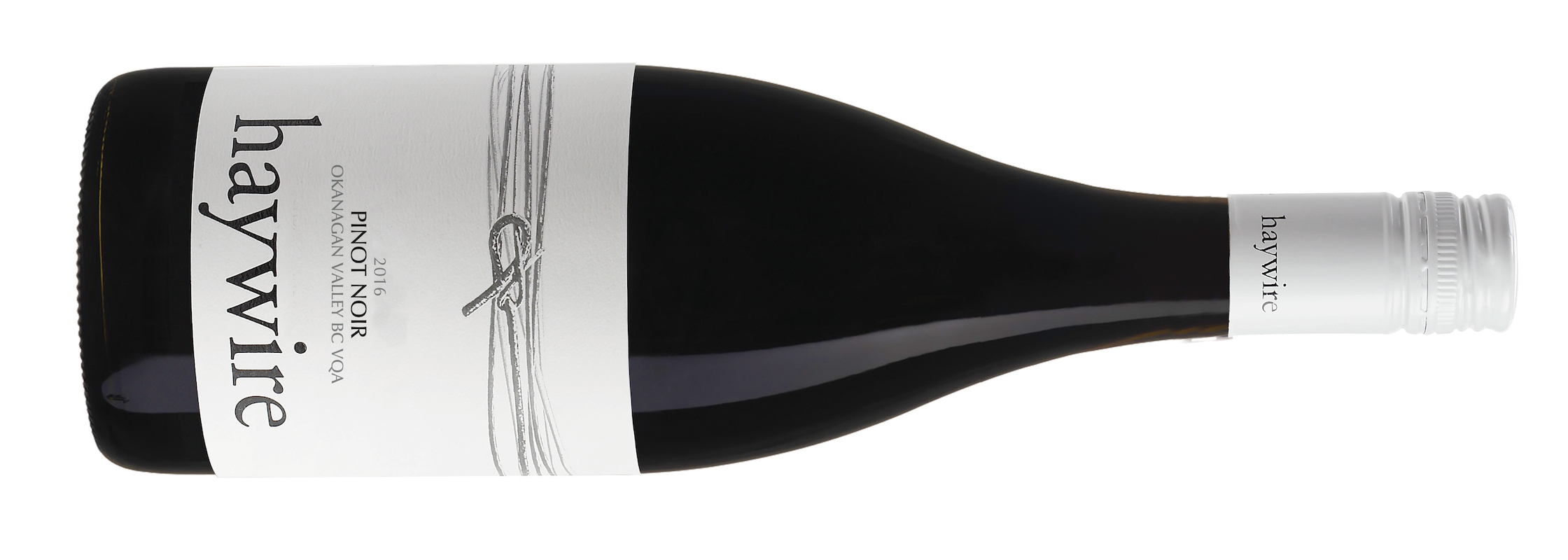 Haywire Pinot Noir 2016 ($27, 89 points) — From Secrest Mountain, wild fermented and aged in Nico Velo concrete tanks for 11 months before being bottled in its purest state. The nose shows earthy red fruits, cassis accents and savoury spice notes. It displays rich, expressive red fruits on the palate, good energy, and subtle earthy/savoury notes on a smooth finish.
Haywire Pinot Noir 2016 ($27, 89 points) — From Secrest Mountain, wild fermented and aged in Nico Velo concrete tanks for 11 months before being bottled in its purest state. The nose shows earthy red fruits, cassis accents and savoury spice notes. It displays rich, expressive red fruits on the palate, good energy, and subtle earthy/savoury notes on a smooth finish.
Haywire Gamay Noir 2016 ($27, 88 points) — Fermented in large concrete vats, pressed after four-week maceration, aged in concrete for 11 months with no racking or filtration. On the nose, look for bright cherry fruit, raspberry, bramble, forest berries and red plums. This is all about the juicy red fruits, touches of earth and licorice all delivered on a super smooth finish.
Narrative wines
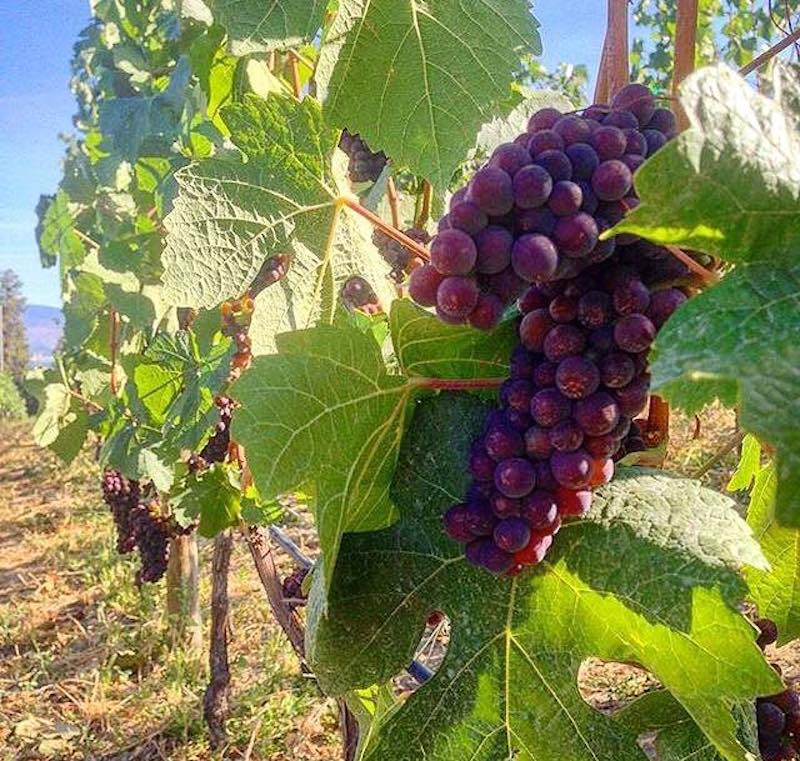
Introduced in 2014, Narrative is a collection of wines and spirits made from grapes sourced from independent growers across the Okanagan and made at the Okanagan Crush Pad. The portfolio attempts to tell the story of the Okanagan and its rare climate, which presents the rare combination of an arid desert landscape and snowy winters. These special conditions produce an intense, short growing season. Wines with natural fresh acidity and lively juicy fruit. Narrative wines and spirits vary from year to year showcasing the best of each vintage. Narrative offers unique blends, a Syrah, a Riesling, sparkling wines, a fortified wine and spirits.
Try these
Narrative Pinot Blanc 2016 ($23, 87 points) — Fermented in concrete with native yeast and aged in concrete for 8 months. The nose shows honey crisp apple, melon and wisps of citrus. It has lovely mouth-feel, integrated fruit and finished perfectly dry and fresh.
 Narrative Riesling 2016 ($23, 88 points) — A fresh and fragrant Riesling with notes of citrus, honeysuckle, tangerine and apple on the nose. Some sweetness on the palate, but a playful tug of sweet and tart fruit, river-rock minerality, citrus and bright apple on a clean and crisp finish.
Narrative Riesling 2016 ($23, 88 points) — A fresh and fragrant Riesling with notes of citrus, honeysuckle, tangerine and apple on the nose. Some sweetness on the palate, but a playful tug of sweet and tart fruit, river-rock minerality, citrus and bright apple on a clean and crisp finish.
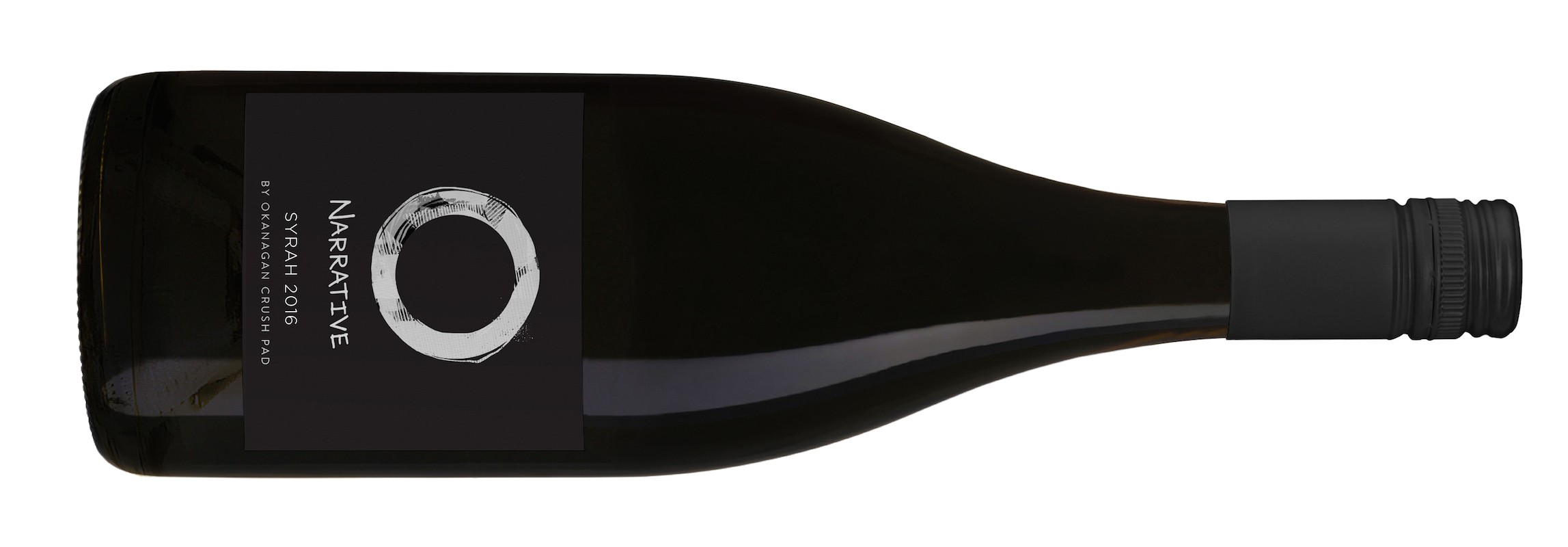 Narrative Syrah 2016 ($30, 90 points) — Sourced from organically-grown vineyards in South Okanagan and fermented and aged in concrete. It has a smoky nose with bacon fat and pepper that fades to a range of red and dark fruits and lovely loamy/earthy notes. Really nice on the palate, beautiful texture, rich and savoury fruits, campfire smoke, black pepper and spice on a silky smooth frame and uplifting acidity.
Narrative Syrah 2016 ($30, 90 points) — Sourced from organically-grown vineyards in South Okanagan and fermented and aged in concrete. It has a smoky nose with bacon fat and pepper that fades to a range of red and dark fruits and lovely loamy/earthy notes. Really nice on the palate, beautiful texture, rich and savoury fruits, campfire smoke, black pepper and spice on a silky smooth frame and uplifting acidity.
Narrative Cabernet Franc 2016 ($30, 89 points) — A blend of Black Sage and Golden Mile fruit that’s fermented and aged in concrete for 9 months. So, no oak, a pure expression of Cab Franc with bright cherry, raspberry, loam and dried herbs. The palate reveals a basket of red fruits, wonderful mouth feel, purity of fruit, and plenty of zippy acidity.





Comment here